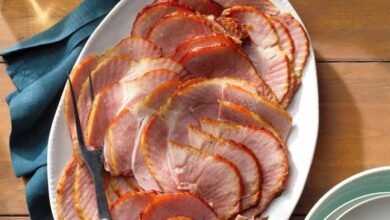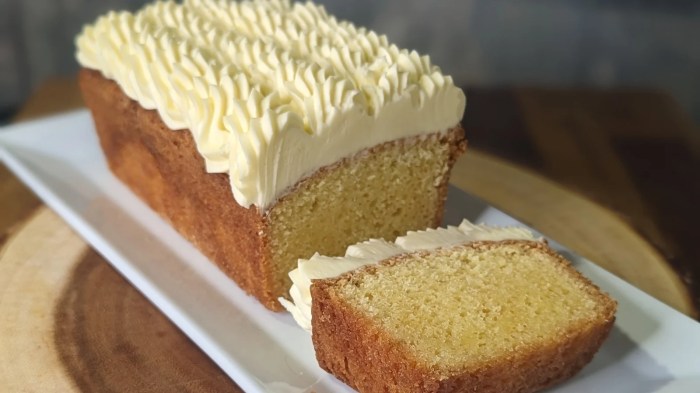
Easy Lemon Curd Pound Cake: A Delightful Treat
Easy Lemon Curd Pound Cake: This isn’t your average pound cake. It’s a symphony of flavors and textures, a delightful blend of buttery cake and tangy lemon curd. This dessert is a testament to the power of simplicity, showcasing how a few key ingredients can create a truly unforgettable experience.
Pound cakes have a rich history, dating back centuries. Their name comes from the fact that they traditionally used a pound each of butter, sugar, eggs, and flour. Over time, the recipe has evolved, but the core concept remains the same: a dense, moist cake that’s perfect for a variety of occasions.
Lemon curd adds a bright and refreshing twist, elevating the classic pound cake to new heights of deliciousness.
The Allure of Easy Lemon Curd Pound Cake
Imagine a cake that embodies the perfect balance of tangy sweetness, a moist and dense texture, and a delicate aroma that lingers in the air. This is the essence of a lemon curd pound cake – a culinary masterpiece that captivates the senses and leaves you wanting more.
Lemon curd, a vibrant and tangy citrus spread, elevates the classic pound cake to new heights. The tartness of the curd cuts through the richness of the cake, creating a harmonious flavor profile that is both refreshing and satisfying. The versatility of this cake is equally impressive, making it an ideal dessert for any occasion, from casual gatherings to elegant celebrations.
The History of Pound Cakes
Pound cakes have a rich history, dating back to the 17th century. Their name originates from their traditional recipe, which called for a pound each of butter, sugar, eggs, and flour. This simple formula resulted in a dense and rich cake that was a staple in English households.
Over time, pound cakes evolved, with variations incorporating different flavors, textures, and ingredients. Today, pound cakes remain a beloved classic, offering a canvas for culinary creativity and a testament to the enduring appeal of simple yet satisfying flavors.
Recipe Breakdown
This easy lemon curd pound cake is a delightful combination of classic flavors and simple techniques. Let’s break down the ingredients and steps involved to understand how this recipe works its magic.
Ingredients and Their Roles
The ingredients in this recipe are carefully chosen to create a cake that is both moist and flavorful.
- Flour: Provides the structure of the cake. All-purpose flour is a versatile choice, ensuring a balanced texture.
- Sugar: Adds sweetness and helps to create a tender crumb.
- Butter: Contributes richness and moisture, enhancing the overall flavor.
- Eggs: Bind the ingredients together, add structure, and contribute to the cake’s richness.
- Milk: Provides moisture and helps to create a tender crumb.
- Lemon Zest: Adds a bright and refreshing citrus flavor.
- Lemon Curd: The star of the show, this tangy and creamy filling adds a burst of citrus flavor to every bite.
Making Lemon Curd, Easy lemon curd pound cake
Lemon curd is a simple yet essential element of this cake. Here’s a breakdown of the process:
- Whisk together the ingredients: Combine egg yolks, sugar, lemon juice, and salt in a saucepan. Whisk until well combined.
- Cook over low heat: Cook the mixture over low heat, whisking constantly, until it thickens. This process takes about 10-15 minutes.
- Strain the curd: Strain the curd through a fine-mesh sieve to remove any lumps or bits of egg yolk.
- Chill and use: Allow the curd to cool completely before using it in the cake. This ensures a smooth and creamy texture.
Preparing the Pound Cake Batter
Creating a light and airy pound cake batter is key to achieving a delicious final product.
- Cream the butter and sugar: This step incorporates air into the batter, resulting in a lighter texture. Cream the butter and sugar together until light and fluffy.
- Add the eggs one at a time: Adding the eggs one at a time ensures proper emulsification, resulting in a smooth and consistent batter.
- Alternate adding the dry and wet ingredients: This technique helps to prevent the gluten from developing too much, leading to a tender crumb.
- Fold in the lemon zest: Gently fold in the lemon zest to ensure an even distribution of flavor.
Baking Techniques
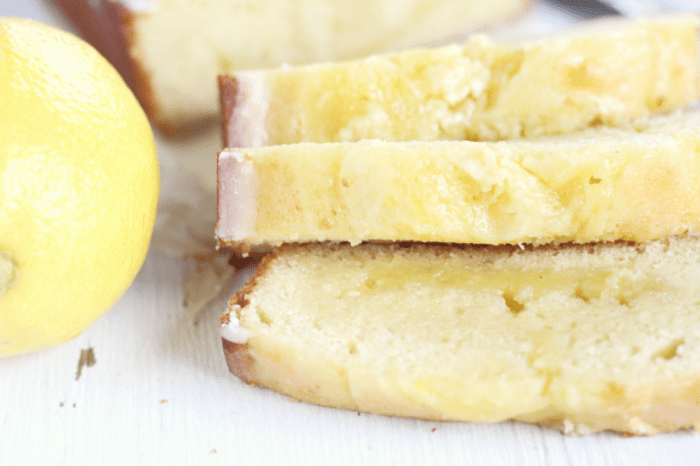
The success of your lemon curd pound cake hinges on achieving the perfect bake. This involves understanding the crucial role of oven temperature and baking time, as well as mastering the art of testing for doneness and cooling the cake effectively.
Oven Temperature and Baking Time
Maintaining the correct oven temperature is paramount to ensuring even baking and a well-structured cake. A consistently heated oven ensures that the cake bakes evenly, preventing areas from becoming dry or undercooked. The recommended oven temperature for a pound cake is 350°F (175°C).
A standard pound cake typically takes 50-60 minutes to bake, but this can vary depending on your oven and the size of your cake pan. Overbaking can lead to a dry and crumbly cake, while underbaking can result in a moist and raw cake.
Testing for Doneness
To ensure your cake is perfectly baked, use a toothpick or cake tester to check for doneness. Insert the toothpick into the center of the cake and remove it. If the toothpick comes out clean or with just a few moist crumbs, the cake is done.
If the toothpick comes out with wet batter clinging to it, the cake needs to bake for a few more minutes.
Cooling the Cake
Allowing the cake to cool completely in the pan before inverting it onto a wire rack is essential to prevent cracking. The cake shrinks as it cools, and if it is inverted too soon, it can crack or tear.To cool the cake properly, let it rest in the pan for 10-15 minutes before inverting it onto a wire rack.
This allows the cake to set slightly, reducing the risk of cracking.
Serving and Presentation: Easy Lemon Curd Pound Cake
This delightful lemon curd pound cake is a versatile treat that can be enjoyed in various ways. Whether you prefer a warm and comforting slice or a refreshing cold dessert, there’s a perfect serving style for every occasion.
Serving Suggestions
This cake is delicious served warm or cold. Here are some serving suggestions:
- Warm: Serve the cake warm from the oven, drizzled with additional lemon curd and topped with a scoop of vanilla ice cream or whipped cream.
- Cold: Allow the cake to cool completely and serve it with a dollop of whipped cream, fresh berries, or a sprinkle of powdered sugar.
Presentation Tips
A beautiful presentation can elevate your lemon curd pound cake from a simple dessert to a culinary masterpiece.
That easy lemon curd pound cake is a perfect dessert for a warm summer day, and it pairs beautifully with a light, fresh meal like Chesapeake Bay stuffed rockfish. The tartness of the lemon curd cuts through the richness of the fish, and the pound cake provides a satisfyingly sweet finish.
It’s a combination that’s sure to please everyone at the table.
- Whipped Cream: A generous dollop of whipped cream adds a touch of elegance and a creamy contrast to the tangy lemon curd.
- Fresh Berries: Arrange a medley of fresh berries, such as raspberries, blueberries, or strawberries, on top of the cake for a vibrant and refreshing touch.
- Lemon Zest: A sprinkle of finely grated lemon zest adds a burst of citrus flavor and a beautiful golden hue to the cake.
Storing Leftovers
To preserve the cake’s freshness and flavor, store any leftovers in an airtight container at room temperature for up to 2 days. You can also freeze the cake for up to 3 months. To freeze, wrap the cake tightly in plastic wrap and then aluminum foil.
When ready to serve, thaw the cake in the refrigerator overnight and then bring it to room temperature before serving.
I love the tangy sweetness of an easy lemon curd pound cake, and it’s a great base for so many different flavor combinations. I recently thought about adding a touch of fall to the recipe by swirling in some homemade old fashioned pumpkin butter , which would create a delightful contrast in textures and flavors.
I can already imagine the warm spices of the pumpkin butter mingling with the bright citrus of the lemon curd, creating a truly unique and delicious treat!
Variations and Adaptations
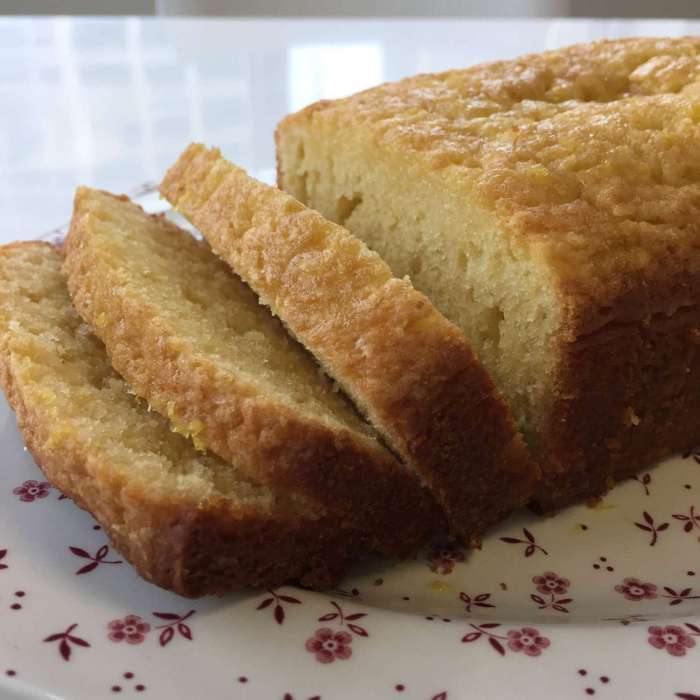
The beauty of this easy lemon curd pound cake recipe lies in its versatility. You can customize it to suit your taste preferences and dietary needs. Let’s explore some exciting variations and adaptations.
Flavor Variations
Adding different flavors to the cake batter or lemon curd can create unique and delicious variations. Here are some ideas:
- Citrus Infusion:Experiment with other citrus fruits like orange, grapefruit, or lime. You can add zest to the batter or incorporate their juices into the lemon curd.
- Berry Burst:Fold in fresh or frozen berries like raspberries, blueberries, or blackberries into the batter for a burst of color and flavor.
- Spiced Delight:Add a touch of warmth with spices like cinnamon, nutmeg, or cardamom to the batter or lemon curd.
- Floral Notes:Incorporate the delicate flavors of lavender or rosewater into the batter or lemon curd for a unique and fragrant experience.
Alternative Fillings and Toppings
While lemon curd is a classic pairing, there are many other delicious fillings and toppings you can use to complement the pound cake.
- Creamy Delights:Whipped cream, mascarpone cheese, or a simple vanilla custard can be spread on the cake for a rich and indulgent experience.
- Fruity Inspiration:Fresh berries, sliced peaches, or a fruit compote can add a refreshing and vibrant touch to the cake.
- Chocolate Indulgence:A drizzle of melted chocolate or a layer of chocolate ganache can elevate the cake to a whole new level of decadence.
- Nutty Crunch:Toasted pecans, almonds, or walnuts can add a satisfying crunch and nutty flavor to the cake.
Dietary Adaptations
This recipe can be adapted to accommodate various dietary needs.
This easy lemon curd pound cake is perfect for a spring brunch, especially when paired with a refreshing fruit salad. I’m always on the lookout for new recipes to try, and recently stumbled upon a recipe for chef johns zombie meatloaf , which sounds both intriguing and delicious.
But for now, I’m sticking with the light and airy flavors of this lemon curd pound cake, which is sure to please everyone at the table.
Gluten-Free
To make a gluten-free version, simply replace the all-purpose flour with a gluten-free flour blend. There are many commercially available gluten-free flour blends that work well in baking.
Remember to adjust the amount of gluten-free flour slightly, as it may absorb moisture differently than all-purpose flour.
Vegan
To make a vegan version, replace the eggs with a vegan egg replacer, such as flaxseed meal or applesauce. Also, use vegan butter and a plant-based milk alternative.
Make sure to use a vegan lemon curd for the filling.
Nutritional Information
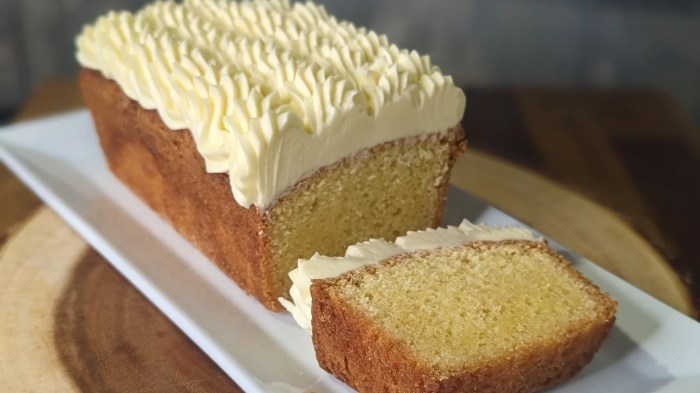
This delectable lemon curd pound cake is a delightful treat, but it’s essential to be mindful of its nutritional content. Let’s break down the ingredients and explore how to make this recipe even healthier.
Nutritional Breakdown
A typical serving of lemon curd pound cake (approximately 1/12th of the recipe) provides around:
- Calories: 350-400
- Fat: 15-20 grams
- Saturated Fat: 5-8 grams
- Cholesterol: 50-70 milligrams
- Sodium: 100-150 milligrams
- Carbohydrates: 50-60 grams
- Sugar: 25-35 grams
- Protein: 3-5 grams
Health Benefits of Ingredients
The lemon curd pound cake is rich in various nutrients. Here are some notable health benefits:
- Lemons:Rich in vitamin C, an antioxidant that supports immune function, collagen production, and skin health. Lemons also contain flavonoids, which have anti-inflammatory properties.
- Eggs:Excellent source of protein, essential for muscle growth and repair. They also provide choline, a nutrient crucial for brain health and development.
- Butter:Contains vitamins A, D, E, and K, which are essential for various bodily functions. However, butter is high in saturated fat, so moderation is key.
Healthier Adaptations
Here are some suggestions for making this recipe healthier:
- Use Whole Wheat Flour:Substituting a portion of the all-purpose flour with whole wheat flour adds fiber, which aids digestion and promotes satiety.
- Reduce Sugar Content:You can reduce the sugar by 1/4 to 1/3, using a sugar substitute like stevia or monk fruit.
- Use Unsalted Butter:Unsalted butter gives you more control over the sodium content of the cake.
- Add More Fruit:Incorporating additional fruit, such as berries or chopped apples, adds fiber and vitamins to the cake.
Culinary Tips
Mastering the art of making a delicious lemon curd pound cake involves a few key tips to ensure a smooth and creamy texture, prevent dryness, and troubleshoot any baking mishaps. Here’s a guide to help you achieve perfect results every time.
Achieving a Smooth and Creamy Lemon Curd
To prevent curdling, it’s crucial to follow these steps:* Use fresh, high-quality eggs:Fresh eggs contain a higher proportion of protein, which contributes to the smooth texture of the curd.
Gradually incorporate the lemon juice
Adding the lemon juice too quickly can cause the eggs to curdle. Whisk the juice in slowly, allowing the mixture to gradually heat up.
Maintain a consistent temperature
Keep the curd mixture at a gentle simmer, avoiding high heat. This ensures even cooking and prevents curdling.
Strain the curd
After cooking, strain the curd through a fine-mesh sieve to remove any lumps or cooked egg white particles. This will give you a perfectly smooth and velvety texture.
Preventing a Dense or Dry Pound Cake
A dense or dry pound cake can be a result of overmixing or using too much flour. Here are some tips to ensure a light and airy cake:* Use a light touch when mixing:Overmixing can develop gluten, resulting in a tough cake. Mix the batter just until combined, leaving some streaks of flour.
Don’t overbake
Baking the cake for too long can lead to dryness. Use a toothpick to check for doneness; it should come out clean or with a few moist crumbs.
Properly grease and flour the pan
A well-greased and floured pan will prevent the cake from sticking and ensure even cooking.
Add moisture
Incorporating ingredients like buttermilk or sour cream can help keep the cake moist and tender.
Troubleshooting Common Baking Issues
While baking, unexpected issues can arise. Here’s how to tackle common problems:* Uneven cooking:If your cake is unevenly cooked, rotate it halfway through the baking time. This ensures even heat distribution.
Sunken center
A sunken center can occur if the oven temperature is too low or if the cake is overmixed. Ensure your oven is preheated correctly and mix the batter just until combined.

